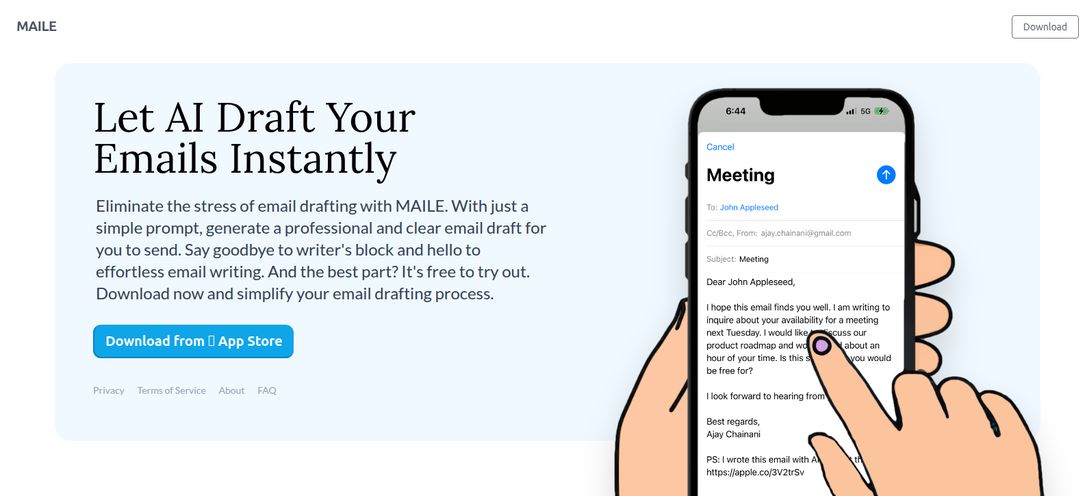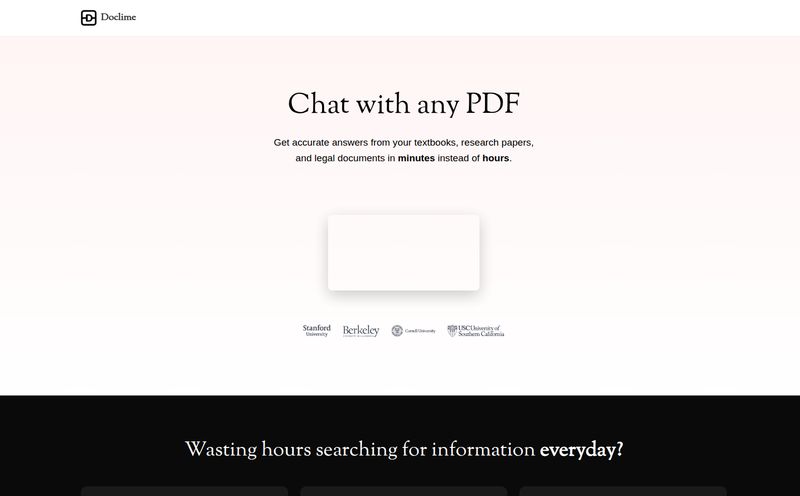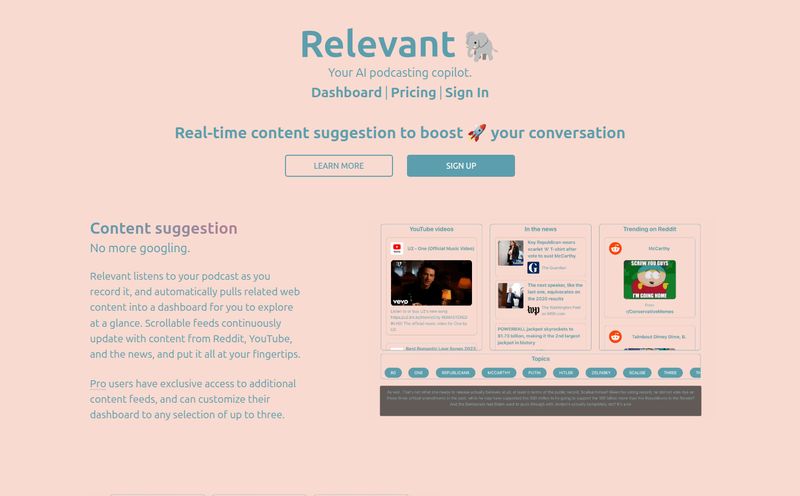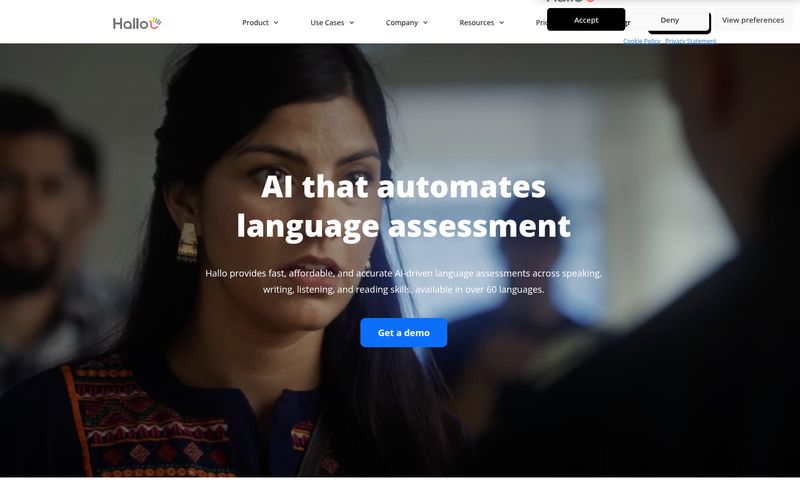If you’re in the SEO, marketing, or any digital space, your browser probably looks a lot like mine most days: a chaotic mess of 37 tabs, a half-written email, three different analytics dashboards, and a Google Doc that’s just mocking you. We’ve been drowning in information for years, and now, with the AI boom, we’re drowning in tools that promise to save us. Most of them are just another tab to add to the chaos.
I’ve tested more AI browser extensions than I can count. Some are neat one-trick ponies. Others are clunky and feel like they were designed by robots, for robots. So when I heard about Browser Copilot AI, I was skeptical. Another “AI companion”? Groundbreaking. But I gave it a shot, and I have to admit… this one feels a little different. It’s not just another chatbot in a sidebar; it’s more like a clever assistant who’s actually reading over your shoulder (in a non-creepy, helpful way).
So, What Is Browser Copilot AI, Really?
Imagine you’re flying a plane. You’re the pilot. You know where you want to go. The copilot isn't there to hijack the controls, but to manage the comms, check the systems, and handle routine tasks so you can focus on flying. That’s the best analogy I can think of for this tool. Browser Copilot AI is a browser extension that acts as your intelligent sidekick. It has contextual awareness, meaning it actually understands the content of the webpage you're on. Whether it's a competitor's blog, a dense PDF report, or your overflowing inbox, it gets the gist.
Instead of you having to copy-paste text into a separate ChatGPT window and give it a whole backstory, this tool is already there, ready to go. It’s designed to help you read, write, summarize, and just generally get things done faster, right where you are.
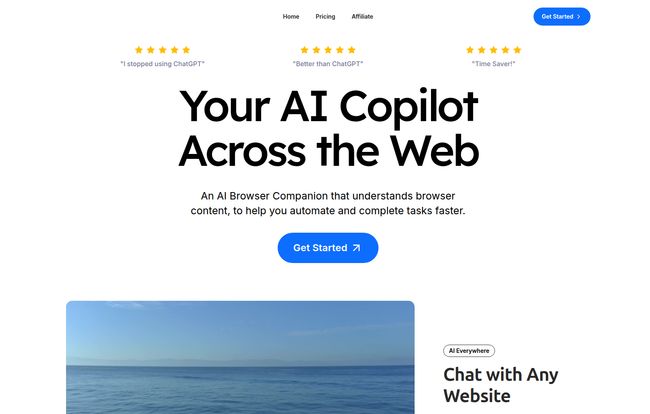
Visit Browser Copilot AI
The Features That Actually Caught My Eye
A long list of features is great for a landing page, but what actually works in a real-world workflow? Here's what stood out to me.
Your AI, Everywhere
This is the core of it. The ability to pull up an AI assistant on any webpage is powerful. I was analyzing a competitor’s landing page, highlighted a section of their copy, and asked it to “Rewrite this to be more persuasive for a B2B audience.” The suggestions were surprisingly good. It’s not about replacing your skill, but about accelerating your brainstorming. It’s also a godsend for quickly understanding technical documentation or academic papers without having to read every single line.
Beyond Text: Chatting with Images and PDFs
This is where things get really interesting. We’ve all been there: you’re sent a PDF of a 50-page market research report that’s just an image scan. Useless, right? Browser Copilot AI has a “Capture and Ask” feature. You can literally screenshot a chart, a diagram, or a block of unselectable text and start a conversation about it. I tested this on an infographic about Google’s algorithm updates, and asked it to “Summarize the key takeaways from this image.” It pulled out the main points flawlessly. This alone is a huge time-saver for researchers and analysts.
The Customization Engine: Building Your Personal AI Army
Now, for the power users. Browser Copilot lets you build your own custom copilots. You can train it on your own data—think your brand’s style guide, your standard customer support replies, or your own writing samples. You can create a “Blog Post Idea Generator” that knows your niche or an “Email Refiner” that adopts your exact tone of voice. It also claims you can connect it to your favorite tools, turning it into a central hub. And the real kicker? It gives you access to five different AI models. So if you're not getting the results you want from one model (say, GPT-4), you can switch to another on the fly. That's a level of flexibility I haven't seen in many other browser tools.
A Big Promise on Privacy
Let's talk about the elephant in the room with any AI tool: data privacy. I'm not feeding my client's confidential marketing strategies into a tool that's using it to train its next model. Browser Copilot AI makes a bold claim on their site: “Content and AI conversations are NOT stored on our servers.” They say they don’t train on your data. If this holds true, it's a massive selling point for professionals and businesses who are rightly paranoid about where their data is going.
Who is This Tool Actually For?
While anyone could probably find a use for it, I see a few roles getting a massive productivity boost:
- SEOs and Content Marketers: For analyzing SERPs, summarizing competitor articles, generating content outlines, and re-writing copy on the fly.
- Customer Support Agents: For instantly understanding a customer's email and drafting tailored, empathetic replies based on pre-defined templates.
- Students and Researchers: For tearing through dense academic papers, reports, and PDFs to find the information they need, fast.
- Sales and Business Development: For researching prospects and crafting personalized outreach emails without leaving LinkedIn or a company's website.
Let's Talk Money: The "Usage-Based" Pricing Model
This is where the conversation gets a bit more nuanced. Browser Copilot AI doesn’t have the typical tiered monthly subscription. Instead, they’ve opted for a usage-based pricing model. Think of it like your electricity bill—you only pay for what you actually use.
On one hand, I love this. It means there’s a super low barrier to entry. You can try it out without committing to a $29/month plan you might only use once a week. For light users, this could be incredibly cost-effective. On the other hand, it can be unpredictable. If you have a heavy week of research and are using the most powerful AI models constantly, your bill could be higher than a standard subscription. I personally prefer predictability, but I can’t deny the appeal of a pay-as-you-go system. It’s a bold move, and whether it’s a pro or a con really depends on your personal workflow and budget.
The Good, The Bad, and The Realistic
No tool is perfect, right? After a week of kicking the tires, here’s my honest breakdown. The biggest plus is the sheer convenience. It just works, everywhere. The contextual awareness saves so much time and mental energy, it's a genuine productivity boost. The customization options and access to multiple AI models are also huge wins for anyone who likes to tinker and optimize their toolkit. And of course, the privacy promise is a big sigh of relief.
But it’s not all sunshine and rainbows. First, it's a browser extension, so you have to install something, which can be a hurdle for some corporate environments. Second, the quality of the output is entirely dependent on the underlying AI models and, more importantly, the quality of your prompts. It’s not magic; it’s a tool that requires a little bit of skill to wield effectively. If you write lazy prompts, you'll get lazy results. That's true of any AI, I suppose. And as mentioned, the usage-based pricing might make some people nervous about getting a surprise bill.
Frequently Asked Questions
How do I get started with Browser Copilot AI?
It's pretty straightforward. You just need to install their browser extension from the respective store for Chrome, Edge, etc. Once it's installed, you can create an account and get started. The usage-based model means you can start with small tasks without a big upfront commitment.
Is it actually safe to use with my confidential work?
They are very public about their privacy-first approach, stating they don't store your conversations or train their models on your data. This is a significant advantage over many other tools. However, as with any third-party tool, you should always review their latest privacy policy and make a judgment call based on your company's security standards.
Which AI models does it use?
The platform provides access to five different leading AI models. While they don't list all of them publicly on the main page, this typically includes models from providers like OpenAI (GPT series) and Anthropic (Claude series). This flexibility allows you to choose the best model for a specific task, which is a pro-level feature.
Is there a free trial?
Because of the usage-based pricing, there isn't a traditional 'free trial' period. Instead, the trial is effectively built-in. You can sign up and use it for a few small tasks, and you'll only be charged a very small amount for that usage. It’s a low-risk way to see if it fits your workflow.
Can it really make me '2x faster'?
Ah, the classic marketing claim! '2x faster' is subjective, of course. But will it make you significantly faster on certain tasks? Absolutely. For summarizing long articles, drafting emails, or brainstorming copy variations, the time savings are real and immediate. It won't do your job for you, but it can definitely clear out the underbrush so you can focus on the important stuff.
Final Thoughts: So, Is Browser Copilot AI Worth It?
Look, I'm a jaded SEO. I've seen it all. But I’m genuinely impressed with Browser Copilot AI. It’s one of the few AI tools that feels like it was designed with a deep understanding of a professional's actual, messy, tab-filled workday. It’s not a gimmick; it’s a thoughtfully designed utility.
It successfully avoids being just another chatbot by deeply integrating into the browser and understanding context. The customization and multi-model support show a commitment to serious users. While the pricing model requires a small mental shift, the power and convenience it offers are, in my opinion, well worth it. If you spend your days wrestling with information inside your browser, you owe it to yourself to give this copilot a try. It might just be the secret weapon you've been looking for.
